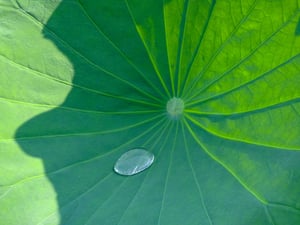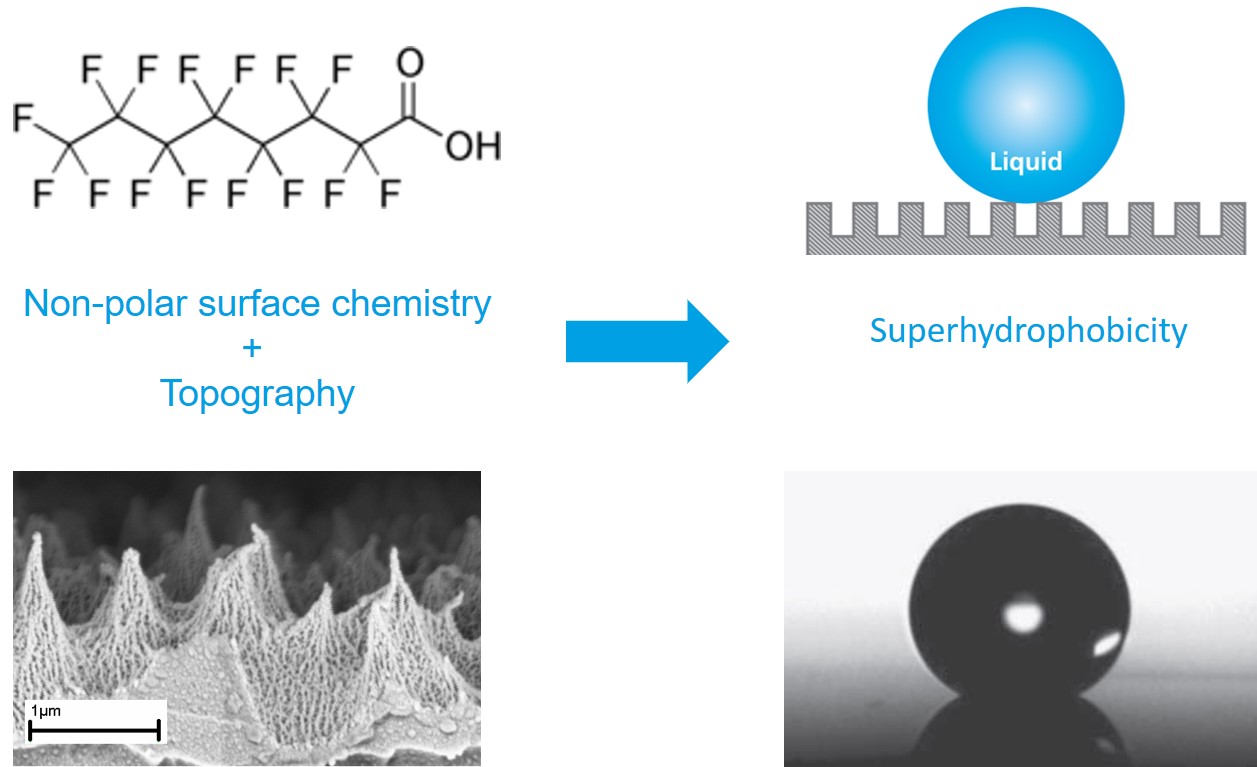Superhydrophobicity and superhydrophobic surfaces have become a buzz word used to describe all kinds of surfaces with high wettability. In the internet, you can find numerous examples of coatings and materials claimed to be superhydrophobic. Some of them probably are but many are just hydrophobic.
Superhydrophobic surface is defined by having the static water contact angle above 150 ° and contact angle hysteresis less than 5 °.
The superhydrophobicity was first observed in nature on lotus leaf and some other plant leaves that would not get wet.
The term lotus effect is sometimes used to refer to self-cleaning properties that are the result of superhydrophobicity. If an electron microscopy image of a lotus leaf is taken, you would see that the surface of the lotus leaf is pretty rough. In addition, to that roughness, the surface of the leaf is covered with a wax-like material. Together, those two properties make the surface superhydrophobic.
Since the discovery of the superhydrophobicity, there has been numerous examples where these types of surfaces are made artificially on various materials. As already discussed, there are two properties required for superhydrophobicity; non-wetting chemistry and micro- and/or nanostructured topography.

The non-wetting chemistry typically comes from fluoropolymer coatings. Most typical fluoropolymer, Teflon®, has the highest contact angle for smooth surface which is around 120 °. It is then clear that the surface chemistry alone is not enough to make surface superhydrophobic, but roughness is also required. The roughness requirement makes the surfaces often non-durable which is the biggest challenge in terms of their usage in different applications.
Single-cell trapping can be done with the help of superhydrophobic and superhydrophilic patterns.
Advancing and receding angles should be measured as the low contact angle hysteresis is also a requirement for superhydrophobicity.
There are three contact angle measurement methods for superhydrophobic surfaces; static, advancing/receding and roll-off angle.
A self-cleaning surface is any surface with the ability to readily remove any dirt or bacteria on it. Self-cleaning surfaces can be divided into three different categories; superhydrophilic, photocatalytic and superhydrophobic.
Blood-repellent surfaces are needed in medical devices that come in contact with blood. The traditional approach has been the use of antithrombotic surface treatments However, these coatings are prone to eventually wear-off. Superhydrophobic surfaces have been proposed as an alternative solution.
With increasing understanding of the superhydrophobicity, the measurement methods to quantify the degree of hydrophobicity deserve some thought.
This video will explain two main methods for measuring dynamic contact angle.
Superhydrophobic surfaces were an instant hit in the scientific community when they were introduced over two decades ago
